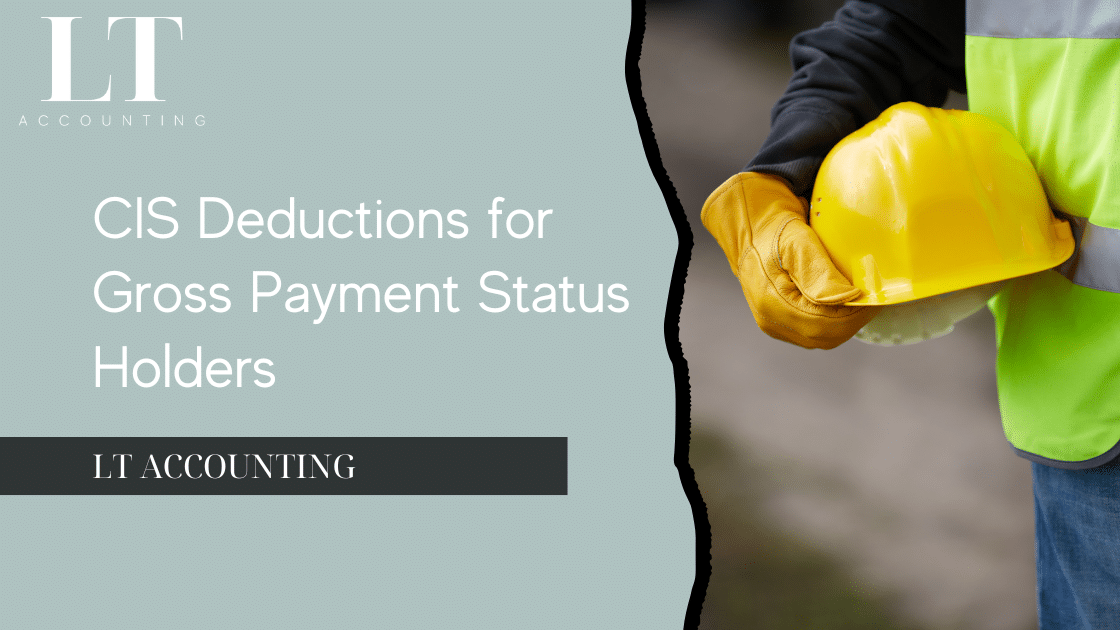The Construction Industry Scheme (CIS) is a key part of the UK’s tax framework, governing how payments are handled from contractors to subcontractors in construction work. As a contractor, it’s vital to understand your responsibilities under CIS—failure to comply can result in expensive penalties and cash flow problems. This guide provides a comprehensive look at CIS obligations, practical examples and case studies, and outlines the impending digital changes under Making Tax Digital (MTD) commencing in April 2026.
What Is the Construction Industry Scheme (CIS)?
The CIS is a withholding scheme administered by HM Revenue & Customs (HMRC) that applies when contractors engage subcontractors for construction operations. Under CIS:
-
Contractors deduct tax from payments to subcontractors—typically 20% if the subcontractor is registered, or 30% if not registered.
-
These deductions count as advance payments towards the subcontractor’s income tax and National Insurance liabilities.
-
CIS applies across most construction-related activities—ranging from site preparation and demolition to decorating and installation of services.
-
Services such as architectural/surveying, delivery of materials, or labour-only scaffolding (without construction labour) are excluded.
The scheme was introduced to reduce tax fraud and improve tax compliance within the construction sector.
Who Counts as a Contractor? Contractor vs. Subcontractor
Mainstream Contractors
These are businesses regularly undertaking construction operations—construction companies, property developers, government departments, even gang leaders organising labour. They must register with HMRC as CIS contractors before making any payments to subcontractors.
Deemed Contractors
Non-construction businesses become deemed contractors if their construction expenditure within any rolling 12‑month period exceeds £3 million. As of April 2025, this threshold became £3 million (previously £1 million) for classification.
Once that threshold is surpassed, the business must register and operate CIS from the next payment. They may also deregister if their average spend falls below the threshold.
Subcontractors
Subcontractors include sole traders, partnerships, limited companies—and even labour agencies or gang leaders supplying work to contractors. They may elect to register under CIS and benefit from reduced deduction rates.
Private householders commissioning work on their own homes are not contractors under CIS—so payments to subcontractors in those cases are outside the scheme.
Contractor Obligations Under CIS
Registering with HMRC
If you qualify as a contractor (mainstream or deemed), registration with HMRC is mandatory before making any subcontractor payments.
Verifying Subcontractors
Each subcontractor must be verified with HMRC before payment. This ensures the correct deduction rate is used—0%, 20% or 30%. Verification via HMRC’s online service or CIS-compliant commercial software is required; businesses verifying 50+ subcontractors must use software.
Making Deductions
Contractors must:
-
Deduct tax on the labour portion only (materials, VAT, plant hire, fuel, etc. excluded).
-
Apply the rate determined after verification (20% for registered, 30% for unregistered, 0% for gross payment status).
-
Pay net amounts to subcontractors and send the deducted amounts to HMRC.
Example
Builder Ltd engages two subcontractors:
-
Jan, registered under CIS, invoices £4,200 (£4,000 labour + £200 materials).
-
Deduction: 20% of £4,000 = £800
-
Jan receives £3,200 for labour + £200 materials = £3,400, £800 goes to HMRC.
-
-
Andrei, not registered, invoices £4,000 labour only.
-
Deduction: 30% of £4,000 = £1,200
-
Andrei receives £2,800, the remainder to HMRC.
-
HMRC CIS 340 guidance for contractors and subcontractors
Records & CIS Returns
Contractors must:
-
Submit a CIS monthly return to HMRC by the 19th of each month, even if no payments were made. Returns include details of every subcontractor, payments, and deductions.
-
Pay CIS deductions to HMRC by the 22nd of each month.
-
Provide payment and deduction statements to subcontractors within 14 days of the end of each tax month.
-
Retain records for at least three years after the end of the relevant tax year.
VAT Considerations
Contractor verification software now ensures subcontractors maintain VAT compliance to qualify for gross payment status (GPS)—failure to maintain VAT obligations may lead to loss of GPS.
Penalties and HMRC Action
Non‑compliance can trigger:
-
Penalties for late CIS filings (£100 minimum, increasing up to £3,000) or late payments.
-
HMRC may claim under‑deducted amounts from the contractor, even if the subcontractor was to blame. A notable case saw a contractor unable to recoup under‑deductions from a subcontractor, suffering a major loss.
-
New regulations from April 2025 extend penalties for false GPS registration applications to directors, agents or anyone influencing registration.
Benefits of Compliance & Common Pitfalls
Benefits
-
Tax properly deducted, reducing risk of HMRC audit or clawback.
-
Subcontractors prefer working with compliant contractors.
-
Contractors demonstrate good governance and minimise financial risk.
Common Pitfalls
-
Failure to verify subcontractors may lead to incorrect deductions.
-
Misallocating material costs as subject to deduction—only direct contractor‑incurred materials qualify.
-
Misclassification of workforce—treating employees as self‑employed can trigger PAYE investigations.
-
Deemed contractors not monitoring the £3 million threshold promptly may suddenly become non-compliant.
-
Missing deadlines for returns or payments triggers penalties.
-
Errors or delays in providing statements to subcontractors (within 14 days) may lead to disputes.
Upcoming MTD Changes: What Contractors Need to Prepare For
From April 2026, CIS will be incorporated into Making Tax Digital (MTD) for Income Tax:
-
Contractors must submit quarterly digital reports (rather than monthly returns) using HMRC‑approved digital tools.
-
Record‑keeping must be digital, in real time: CIS statements, expenses, materials, plant hire, travel costs etc. must be captured as transactions occur.
-
No more year‑end bulk returns—submissions will align with each reporting quarter plus an End of Period Statement (EOPS) to summarise annual liability.
-
Use of approved accounting software will no longer be optional—it will become mandatory.
Contractors should:
-
Review current CIS processes, assess current software or paperwork practices.
-
Ensure digital capture of expenses and deductions (e.g. via mobile scanning of receipts).
-
Choose MTD‑compliant software that supports CIS workflows, including subcontractor verification and digital reporting.
-
Train staff to meet new quarterly deadlines and understanding of digital record‑keeping.
Case Studies & Practical Examples
Case Study: Renovation Contractor Ltd
-
Spends around £4m annually on minor renovation contracts.
-
Became a deemed contractor in May 2025 when cumulative 12‑month spend exceeded £3 million.
-
Registered for CIS immediately, set up verification software, and established digital record‑keeping.
-
Avoided HMRC penalties by ensuring monthly statements and payments were compliant.
-
Prepared early for MTD 2026 by adopting cloud accounting and training staff in photo‑capture of receipts.
Example: Public Body Undertaking Construction Work
-
A local authority-owned housing stock invests in construction on its own premises.
-
Falls under the deemed contractor rules, but work on premises used for business purposes only (not let or held for investment) may be exempt from CIS.
-
Maintains ongoing monitoring of spend, ensures correct treatment of exempt work, and remains CIS-registered for relevant parts of its operations.
Small Contractor Scenario
-
A small firm regularly engages self-employed painters and decorators. It registers as contractor, verifies each subcontractor (many opt in to CIS to benefit from lower 20% deductions), and files returns monthly.
-
Materials and plant hire are accurately reported and excluded from deductions.
-
Uses CIS-compliant software to avoid manual errors and automatically generates statements for subcontractors.
Checklist: Contractor Responsibilities Under CIS
| Responsibility | Details |
|---|---|
| Registration | Register as contractor before first payment; monitor £3m threshold for deemed status. |
| Verification | Verify each subcontractor’s CIS status before payment. |
| Deductions | Deduct only on labour component: 20%, 30%, or 0% depending on status. |
| Statements | Provide subcontractor statement within 14 days of tax month-end. |
| Returns & Payment | File return by 19th, pay deductions by 22nd each month. |
| Records | Preserve records for at least 3 years post tax year. |
| VAT / GPS checked | Ensure subcontractors remain VAT-compliant if claiming gross status. |
| Penalties | Avoid late filing, incorrect deductions or false registration info. New 2025 GPS penalties apply. |
| MTD‑Readiness | From April 2026, shift to quarterly MTD digital reporting using HMRC-approved software. |
Conclusion
Contractors in the UK construction industry must be diligent with CIS compliance—beginning with proper registration, timely subcontractor verification, accurate labour‑only deductions, and punctual filing of monthly returns and statements.
With recent legislative updates such as upgraded deemed contractor thresholds, expanded GPS penalties, and HMRC focus on VAT compliance, contractors must stay alert.
Looking ahead to April 2026 brings the additional complexity of Making Tax Digital for CIS, requiring real‑time digital record‑keeping and quarterly reporting.
By adopting robust systems built around CIS-specific software, training staff accordingly, and maintaining careful records, contractors can reduce risk, avoid financial losses, and operate confidently within evolving tax requirements.
If you’d like specialist assistance—be that software recommendations, process review, or CIS training—LT Accounting is here to support your business. Reach out for a consultation and ensure full compliance both now and as the digital reforms roll in.
Key Summary
-
CIS applies when contractors pay subcontractors for construction operations; tax is deducted at 20%, 30% or 0% based on registration status.
-
Contractors must register, verify subcontractors, deduct correctly, file returns and maintain records.
-
Non‑compliance can lead to penalties up to £3,000 or more, and HMRC may clawback under‑deductions.
-
New rules from April 2025 raise the deemed‑contractor threshold to £3 million and widen GPS penalties.
-
From April 2026, CIS integrates into MTD, requiring digital systems and quarterly submissions.






